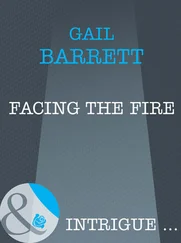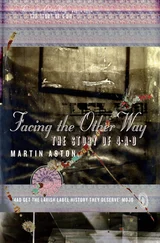4 Most human beings can move. We can walk, jump, run, dance, or play sports. We have hundreds of muscles and bones coordinated by prodigiously synchronized nerves, ready to obey us and take us where we want to go.
5 Our lungs are amazing filters. Through millions of alveoli, they purify the air that they take in, oxygenate our blood and free our bodies from harmful waste. There is no doubt that we were created for life. We have been designed to be happy.
How can we complain about pain in our arms or legs, when we see others who don’t have any of these limbs and still laugh?26 I have known blind people who are happy, because they know how to see the light beyond the shadows, and I also have met people whose eyes work perfectly and yet live in the shadows, because they don’t know how to truly see…. Why limit ourselves to thinking of the few things that make us suffer and not remember the many things for which we should be grateful?
I must add, however, that it is dangerous to let ourselves be seduced by the siren songs of the preachers of positive thinking who cultivate the myth that we can achieve everything that we set out to do. It’s okay to aim for great things, and we should try. But we all have limits set by nature or our circumstances. In every life, there are situations and moments of darkness, disease, frustration, failure, grief.
We can often overcome them on our own, but sometimes it is impossible to face them alone. Fragility is part of the human condition. We need help in difficult moments. Aside from getting appropriate care, which is most important and most urgent, there are three basic steps that will help us cope with suffering: heeding the warning signs, practicing spiritual serenity, and learning to live with inevitable pain.
Heeding the warning signs
No matter how we prepare ourselves, pain always takes us by surprise. Especially in Western societies, where we have passed on the responsibility for pain management to the experts. We forget that we ourselves are the main stakeholders, and that our own bodies put the most immediate curative resources into action. Patients are not mere damaged machines that need to be repaired. Actually, we are the first involved in our healing process. Each one of us has an “inner doctor,” as Albert Schweitzer called it,27 with amazing abilities to activate our recovery mechanisms. All treatments are, to a greater or lesser extent, a joint effort between the medical team, the patient, and that inner doctor.
Our first reaction to pain should be to listen to its messages. Instead of limiting ourselves to taking an aspirin and going on, it would be better for us to stop and see what’s wrong and ask ourselves, “When do I have these problem? Before or after I eat? During the day or at night? Is this related to my work or to my relationships? Does it have a connection to my fear of the future or with a past event? Etc. Instead of silencing pain at all costs, it would be better to start by listening to its warning voice. Perhaps we should thank it for the warning and act accordingly.
Practicing Spiritual Serenity
Since Dr. Hans Selye28 —the great pioneer—discovered the undeniable impact that emotions have on our health, we know for a fact that anxiety does nothing more than exacerbate pain. Bitterness and resentment, together with the desire for revenge, are negative responses that only intensify discomfort and increase stress.
It has been proven that suffering is alleviated by maintaining a calm and positive attitude. In all cultures, prayer and meditation are traditionally associated with the solution to certain personal problems. Modern medicine has demonstrated the beneficial effects of these and other relaxation techniques, without understanding their mysteries. Meditation and prayer positively affect respiration, heart rate, and consequently, the activity of the sympathetic nervous system. The muscles relax and inner calm neutralizes the stressful situation. Current research29 shows that individuals who have a deep spirituality have a much lower risk of heart problems, arteriosclerosis, and hypertension.
As we will see later in the book, hope is a deep conviction that provides us with the inner strength to keep going in the midst of adversity. There is nothing we need more when we are suffering. And there is nothing worse for healing than hopelessness. As one patient said, “My dignity consists of not giving up and continuing to fight.”30
Learning to live with pain31
Serenity emerges when we accept our reality and we have the courage to face it until the end. It’s not about mastering the art of autosuggestion. It’s about learning to implement mechanisms that lighten our burdens. It’s about learning from the past to know how to live in the present and face the future, whether it is to accept fate or to fight to change it.
Barbara Wolf recommends conscious distraction as an effective way to cope with chronic suffering: working, reading humorous books, doing a hobby that we enjoy, playing sports, amusing ourselves with something that interests us (nature, music, art, etc.). That is to say, enjoying any positive activity, preferably creative or useful, that pleases us and can somehow distract the mind from the reality of suffering. It means using our own faculties as allies against suffering. Immanuel Kant, Robert Schumann, and Blaise Pascal all declared that when they began to write, compose, or reflect deeply, they forgot—at least partially—their suffering, while resigning themselves to wait until their pain was relieved in order to do those things made them suffer much more.32
Mary Craig wrote: “The only cure for suffering is to face it head on, grasp it around the neck, and use it.”33 In this struggle between submission and resistance, there is nothing better to help us forget ourselves—if only for a few moments—than doing something for someone else.34 When we are determined to give more to life than we have received, being useful to others is, without a doubt, a huge pain reliever and a wonderful therapy.35
1. William James, The Principles of Psychology, Harvard University Press, 1983 (1890),
2. Sentence that William Shakespeare puts in the mouth of Prospero en The Tempest. Along the same lines, Ellen G. White says: “Life is what we make it, and we shall find what we look for. If we look for sadness and trouble, if we are in a frame of mind to magnify little difficulties, we shall find plenty of them […]. But if we look on the bright side of things, we shall find enough to make us cheerful and happy. If we give smiles, they will be returned to us; if we speak pleasant, cheerful words, they will be spoken to us again.” (The Adventist Home, p. 430).
3. Santiago Ramón y Cajal was awarded the Nobel Prize in Physiology or Medicine in 1906.
4. According to Dr. Mario Alonso Puig, it has been shown in several studies that one minute of entertaining negative thinking puts the immune system delicate situation for six hours. The prefrontal region of the brain, where more advanced thinking occurs, where our future is determined, where we weigh strategies and alternatives to solve problems and make decisions, is tremendously influenced by the limbic system, which is our emotional brain. So, what the heart wants to feel, the mind will end up showing (See Mario Alonso Puig, Reinventing yourself: Overcome Your Anxiety and Fera When Faced with Lifes’s Problems and Challenges, London: Marshall Cavendish Editions, 2011).
5. Dr. Paul Brand and Philip Yancey, Pain: The Gift Nobody Wants, New York: Harper Collins, 1993, p. 61.
6. Johann Wolfgang von Goethe rightly stated that “thinking is easy, acting is difficult, and to put one’s thought into action is the most difficult thing in the world.”
7. This is called the “Anzio Effect”. When It Hurts: Prayer, Preparation and Hope for Life’s Pain, Grand Rapids: Zondervan, 2006, p. 33.
Читать дальше












